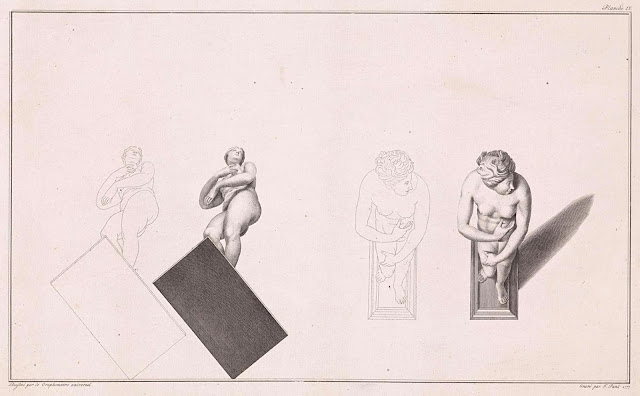 |
| Hieronymus Cock Roman Ruin 1562 etching, engraving British Museum |
 |
| Hieronymus Cock Roman Ruins 1551 etching British Museum |
Making pictures of what remained above-ground from the Roman past was not really a separate task from inventing pictures of what might have survived but hadn't. Both activities were full-time jobs for many generations of artistic Italians (and artistic foreigners) in the new Rome that dominated Europe aesthetically rather than politically during the 16th and 17th centuries.
 |
| Giovanni Battista de' Cavalieri Columns and entablature from Temple of Venus Genetrix 1569 engraving British Museum |
 |
| Giovanni Battista de' Cavalieri Temple of Vesta 1569 engraving British Museum |
 |
| Giovanni Battista de' Cavalieri Pantheon cut-away 1569 engraving British Museum |
 |
| Antoine Lafréry Pantheon with Sculpted Lions 1549 engraving British Museum |
 |
| Antoine Lafréry Antonine Column and Vatican Obelisk 1550s engraving British Museum |
 |
| Antoine Lafréry The Colosseum ca. 1547-60 engraving British Museum |
 |
| Johann Wyssenbach Design for a Triumphal Arch 1558 woodcut British Museum |
 |
| Johann Wyssenbach Design for a Temple with Herms 1558 woodcut British Museum |
 |
| attributed to Agostino Veneziano Arch of Constantine early 16th century engraving British Museum |
 |
| Antoine Lafréry Reconstsructed view of the Arch of Constantine ca. 1547-60 engraving British Museum |
 |
| Antoine Lafréry Reconstructed view of the Arch of Septimus Severus 1547 engraving British Museum |
 |
| Antoine Lafréry Reconstructed view of the Arch of Vespasian 1548 engraving British Museum |









































